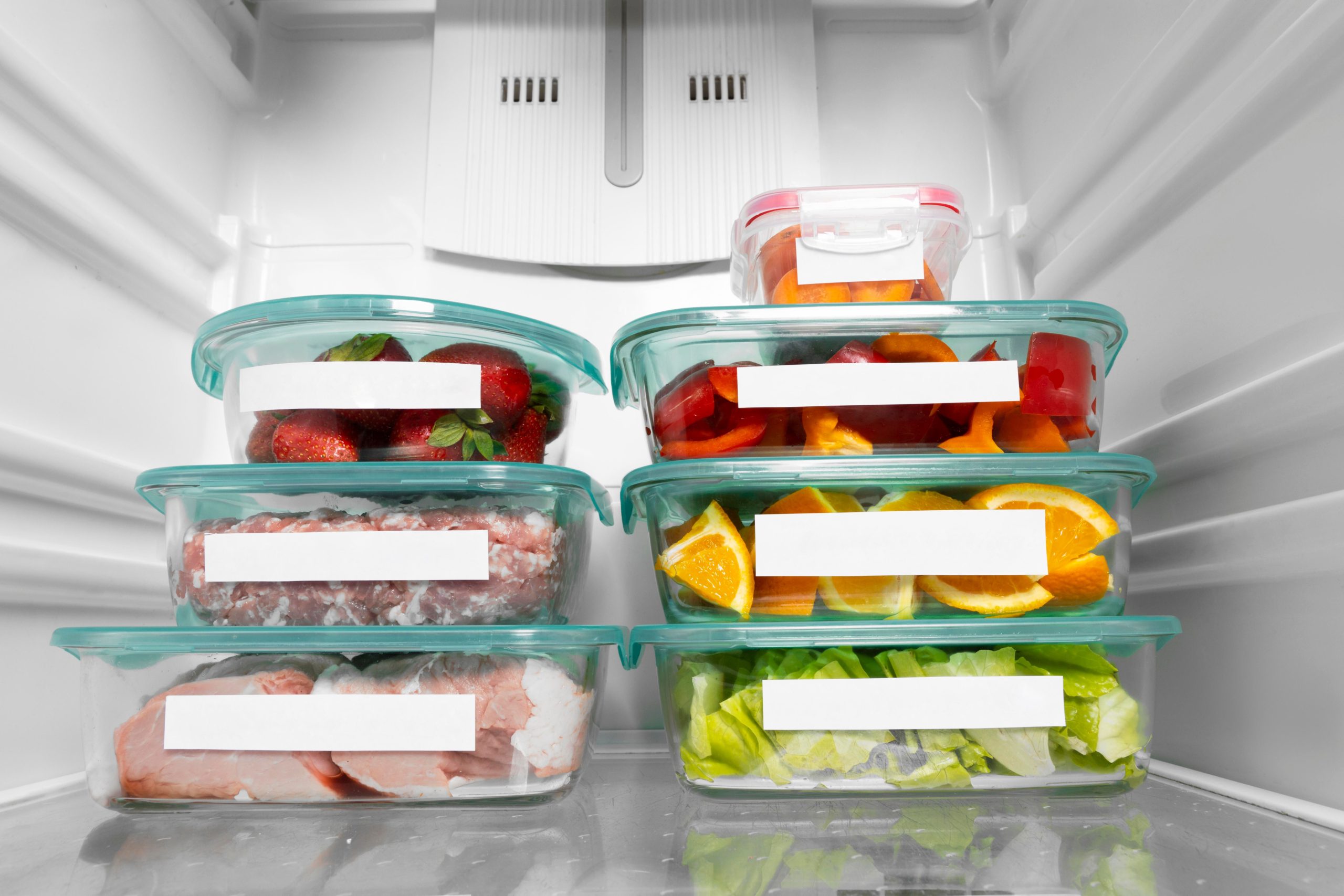Keeping our food fresh helps us to avoid getting sick and saves us money. Food which is not correctly stored can spoil or become contaminated and make you sick. But how do we safely store food?
The following tips can help you safely store food and protect your health.
Refrigerating, Freezing, and Thawing Food
- After food has been cooked, it should be eaten or refrigerated within two hours. Food which has been at room temperature for between two and four hours cannot be put back in the refrigerator and must be eaten. Any food that has not been refrigerated within four hours should be discarded.
- Food should be stored in airtight, clean, dry, sanitary containers. This will help keep food for longer and reduce the risk of contamination.
- Many foods must be stored in the refrigerator, kept below 5 degrees Celsius, to reduce the risk of bacterial contamination. These “high-risk foods” include – dairy, eggs, meat, poultry, seafood, and cooked rice and pasta. The same applies to ready-to-eat foods of which the ingredients are high-risk foods such as – casseroles, desserts and cakes, pasta salad, pizza, quiche, and sandwiches.
- Use refrigerated leftovers within two days.
- Freezing food increases its longevity. The water content of the food freezes and this prevents bacterial growth and food spoiling. Foods should be frozen at -18 degrees Celsius. It is important to note that freezing food does not eliminate bacteria and when the food defrosts, bacteria will start to grow and multiply again.
- Rather than on a kitchen countertop, frozen foods should be thawed (defrosted) in a refrigerator at -5 degrees Celsius until it is ready to be prepared.
- Reheat and eat cooked food that has been frozen and removed from the freezer within 24 hours of fully defrosting, making sure it is heated until it reaches a temperature of 70 degrees Celsius for two minutes.
- It is very important to avoid refreezing food which had already been frozen and thawed. This is a concern for those of us who live in countries where they experience regular electricity cuts.
- In both the fridge and the freezer, it is important to keep raw and cooked foods separate as well as storing cooked food above raw food to reduce the risk of cross-contamination. Raw chicken and poultry, including eggs, should be on the lowest shelf of the fridge to avoid dripping on other products- a frequent source of cross-contamination between food items. While the ready-to-eat meals that have already been cooked or don’t need to be cooked or heated should be on the top shelf.
Understanding Dates
Do you know the difference between “use-by” and “best before ”dates? Of course, these dates are only valid you follow the storage instructions on the label. So, do read those food labels and follow the manufacturer’s instructions such as “once open, keep refrigerated and use within 7 days”.
“Best before” date is about quality. After this date, it’s usually still safe to eat, but the taste, texture, or smell, might not be at its best. You will see “Best before” dates on fresh fruits and vegetables and foods that are canned, dried, and frozen.
“Use by” date is about safety. After this date, it may make you sick. Even if it smells or tastes OK, never eat food after its use-by date. You will see “Use by” on perishable foods, such as dairy products, checking, meats, seafood, and prepared salads and sandwiches.
Outside the Fridge and Freezer
- Some foods can safely be stored outside the fridge or freezer. A clean, dry, shaded and cool (below 25 degrees Celsius) shelf is the best place to store dry food (in sealed containers or bags), bread, and unopened cans, jars, drinks.
- Some produce is sensitive to cold and should not be stored in the refrigerator -bananas are one example.
- Potatoes, garlic, and onions are best stored outside the refrigerator in a dark place, so they don’t sprout.
- Produce that needs ripening, such as avocados or tomatoes can be ripened by them storing at room temperature, away from direct sunlight.
- Always avoid placing food on the floor to avoid attracting insects and rodents and store chemical cleaners far from food.
Re-using Storage Bags
If you re-use single-use plastic carrier bags or a reusable bag for life, help prevent bacteria from spreading to ready-to-eat food by:
- Packing raw foods separately from ready-to-eat foods and in separate bags
- Separating reusable bags for raw foods and ready-to-eat foods – don’t use the same bags for the two
- After each use, make sure your bag is not spilling anything such as raw meat juices. If there has been any spilling, any plastic storage bags should be discarded while fabric bags for life can be washed in the washing machine.
Keep yourself and others safe by ensuring that your food is properly stored.

